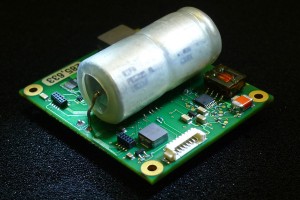Design and Optimization of High Current Laser Diode Drivers
INTRODUCTION
 These posts will explain the development and technical challenges encountered in the design of laser diode drivers, especially high current devices used in military applications. The pros and cons of simple analog drivers are discussed showing the course of development over the last fifteen years, culminating in sophisticated switching circuits with intelligent control that ensure long life and high efficiency.
These posts will explain the development and technical challenges encountered in the design of laser diode drivers, especially high current devices used in military applications. The pros and cons of simple analog drivers are discussed showing the course of development over the last fifteen years, culminating in sophisticated switching circuits with intelligent control that ensure long life and high efficiency.
Typical factors to be considered when reviewing design options for a diode driver to be employed in a military laser include size, weight, cost, efficiency, and reliability over specified environmental operating conditions. Unfortunately, these factors are often in conflict with one another; the least expensive approach often will not be the smallest and may not work across all environmental operating conditions.
EXECUTIVE SUMMARY
Simple linear diode drivers are inappropriate for use in military laser systems due to their inherent inability to adapt to changing environmental conditions and the effects of aging on internal components and external diode loads. This inability to adapt to changing conditions results in poor electrical efficiency and high electrical stresses on internal components leading to shortened battery lifetime and increased risk of failure.
It is extremely difficult to meet the temperature and operational lifetime requirements of military laser systems when commercial aluminum electrolytic capacitors are used as energy storage elements in diode drivers. Although these capacitors are an attractive option due to their inexpensive cost, their characteristics change significantly over temperature and with age. Hermetically sealed capacitors are available with superior temperature and aging characteristics, but these are much more expensive than commercial electrolytics. These sealed capacitors have the added benefit of being much smaller than commercial capacitors.
Linear diode drivers can be designed with intelligence to mitigate some of the effects of changing operational conditions. With such designs, numerous input conditions are sensed and this information is then used to modify the operation of the driver. This is an improvement over simple linear designs, but further reductions in size can be realized.
Diode drivers employing intelligent, high-frequency switching circuitry to produce the output current pulse are much more tolerant of changing operational conditions and also are inherently more efficient than linear diode drivers. Stresses on internal components are lower than in linear designs leading to higher reliability and longer operational lifetimes. Additionally, such designs require approximately one fourth as much capacitance as linear designs resulting in more compact, lighter products. It is also possible with such designs to utilize commercial electrolytic capacitors and still meet military environmental requirements, albeit with reduced operational lifetime due to the effects of aging on such capacitors.
DISCUSSION
To understand the trade-offs associated with various design options, it is important to first understand the limitations of the one element common to all such designs, the storage capacitor. A battery or external power supply is not normally capable of supplying the peak power necessary to drive a pump laser diode. Therefore, almost all design options require a power converter stage to convert the input power to a voltage higher than the diode load voltage and to store energy at this voltage in a storage capacitor. The storage capacitor must supply sufficient energy to power the diode load while still maintaining enough voltage to offset various potential losses in the system. A design example of a simple linear diode driver circuit illustrates how the characteristics of the storage capacitor can affect the efficiency and reliability of such a design.
In the next post we will discuss linear design of laser diode drivers.
© Analog Modules Inc., 2016. This post may be reproduced in its entirety without editing.

 sales@analogmodules.com
sales@analogmodules.com 1-407-339-4355
1-407-339-4355





 Hybrid eyesafe laser rangefinder receiver is designed for laser rangefinding & surveying equipment. Compact construction is ideal for miniature applications. Fast recovery from T0 overload allows ranging to close objects without compromising long range performance. The incorporation of an InGaAs APD gives very high sensitivity with time programmed gain to minimize false targets. Operation at both 1.06 µm and 1.54 µm is possible over a wide range of pulse widths.
Hybrid eyesafe laser rangefinder receiver is designed for laser rangefinding & surveying equipment. Compact construction is ideal for miniature applications. Fast recovery from T0 overload allows ranging to close objects without compromising long range performance. The incorporation of an InGaAs APD gives very high sensitivity with time programmed gain to minimize false targets. Operation at both 1.06 µm and 1.54 µm is possible over a wide range of pulse widths.
